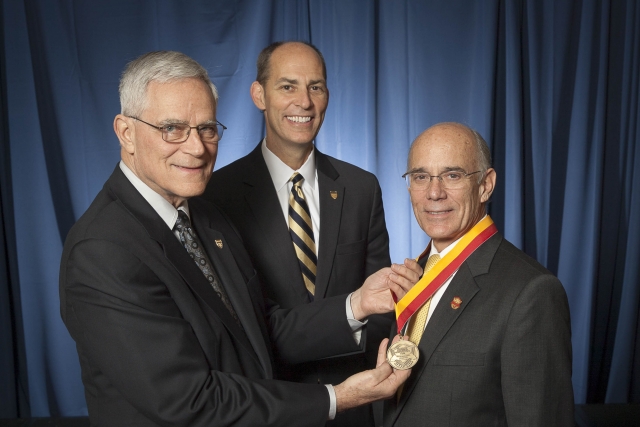Rafael Bras, provost & executive vice president for Academic Affairs and K. Harrison Brown Family Chair, and Professor Barry Goodno are two of the newest “distinguished members” of the American Society of Civil Engineers (ASCE), an honor that recognizes their “acknowledged eminence” in their fields. The Society’s highest accolade, to date only 659 of ASCE’s worldwide members have been elected to receive this honor since ASCE’s founding in 1852.
Bras was recognized for his innovations in the field of hydrology, using probability and statistics to improve forecasting and risk estimation. His rainfall and spatially distributed runoff models have significantly advanced river flow forecasting and flood estimating. He received the award at the ASCE Annual Convention in New York, N.Y., Oct. 11-14, 2015.
“I am proud to be a Civil Engineer, the same profession of my father, and to be recognized by one’s peers in this way is a high compliment.” Bras said. “As civil engineers in the 21st century, the opportunities to leave the world better than we found it are vast.
“I thank ASCE for always being there for me and hope that it will always be there to inspire the extraordinary young people that follow us.”
Bras is an international consultant who has served on an international panel that provided oversight to the design and construction of tidal gates to protect the city of Venice against flooding. He also served on the New Orleans Hurricane Protection Committee of National Academy of Sciences.
Before working at the Georgia Institute of Technology, Bras was Distinguished Professor and Dean of the Henry Samueli School of Engineering at the University of California – Irvine. Prior to his time at Irvine, Bras was a longtime professor and director of various programs and departments at the Massachusetts Institute of Technology (MIT), where he earned numerous awards and honors. Aside from his scholarly career, Bras was elected to the National Academy of Engineering in 2001 for innovation in hydrological forecasting and hydrometeorology through application of new technology, probability and statistics, and for the advancement of civil engineering education.
